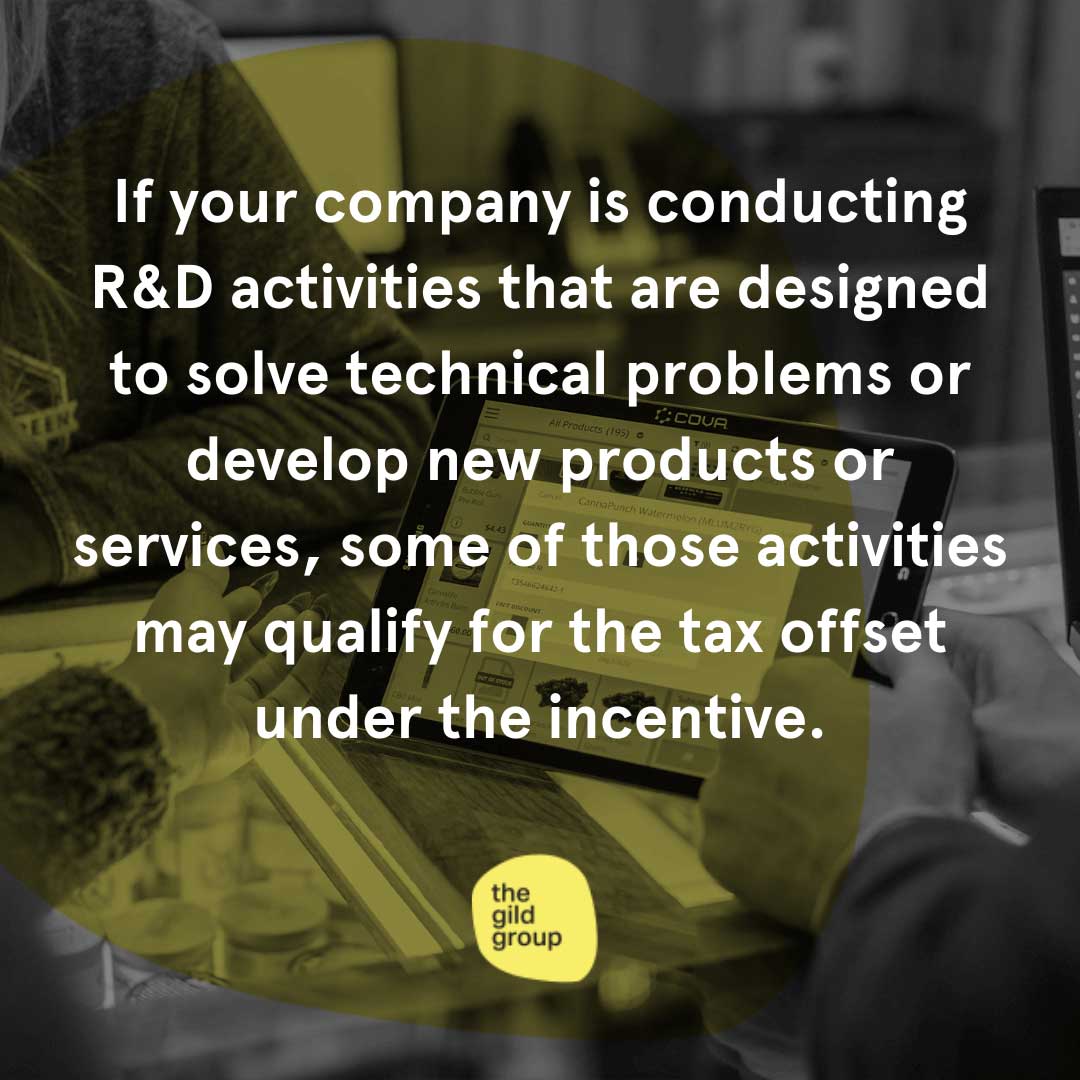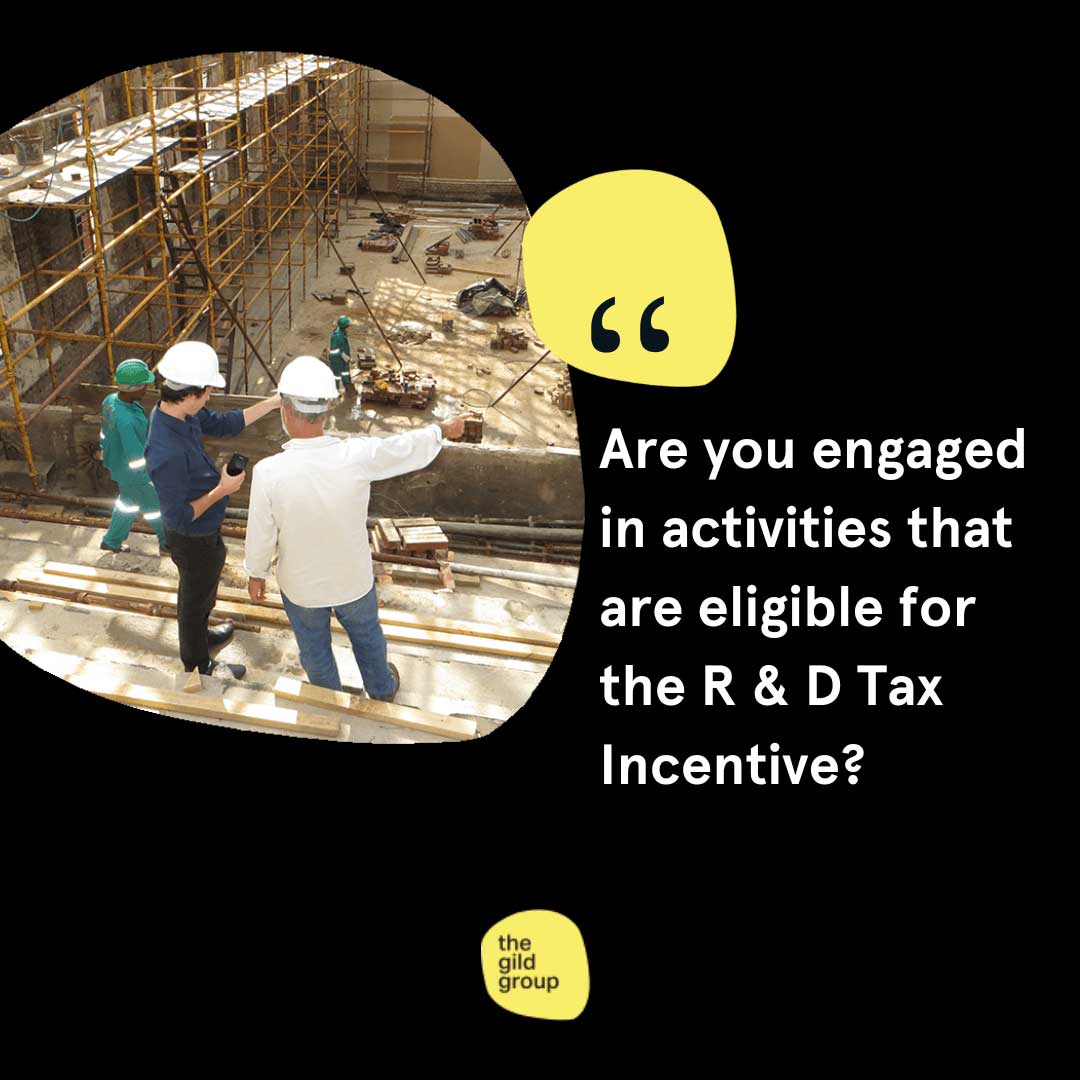The Research and Development (R&D) Tax Incentive is one of the government’s key schemes to support innovation, increase productivity and drive economic growth in Australia.
So what does that mean for directors of engineering and construction companies?
Businesses can offset some of the costs to reduce the financial risks associated with R&D investment decisions.
However … in our experience, one of the main reasons so many businesses do not claim R&D tax credits is that they are unaware that their industry is eligible.
This article makes sure that this won’t happen.
In simple terms – if your company is conducting R&D activities that are designed to solve technical problems or develop new products or services…
Some of those activities may qualify for the tax offset under the incentive.

To make this a little simpler, below we’ve outlined two practical case studies of R&D activities in the engineering and construction industry.
In this scenario we explore the development of a new method of removing contaminants from ground material.
Design & Construct (D&C) is a construction company that is developing a new commercial centre. As part of this project, D&C will undertake the civil works for the site development. As part of the initial planning work, D&C conducted geotechnical analysis of the proposed development site.
The geotechnical analysis highlighted issues with an unusually high level of hazardous material in the planned footprint of the commercial centre and would need to be removed prior to the commencement of works.
Based on D&C’s industry expertise, and from background research conducted, the company believed that there may be a new method that will more effectively treat and remediate ground material.
Informed by the company’s background research, D&C’s proposed to develop a new method of ground contamination remediation. They thought that applying the use of a new chemical compound that is capable of changing the state of contaminants from a solid to liquid state.
Further, D&C proposed to trial the use of underground trenches two metres below ground surface then use a high-pressure water system to saturate the surrounding ground with a mixture of water and the chemical at a ratio of 2:1.
So, D&C developed the hypothesis …
If a 2:1 ratio of water and a new chemical compound, when combined, then applied to ground material, the chemical mixture will convert the contaminant into a liquid state and strip it from the ground material enabling it to be collected safely in a drainage system.
A small-scale trial was undertaken over two weeks and although promising, the trial was not completely successful as the mixture ratio was not fully effective in removing the contaminants from the ground material.
The company analysed the results and modified its hypothesis. Next, they proposed another trial using an adjusted ratio of 1:1 water to chemical. This new ratio was thought likely to be more effective.
This second trial proceeded for a further two weeks on a different part of the site and the new mixture ratio was found to be successful. Following this, D&C applied the method to the remaining site area.
Types Of R&D Activity In This Scenario:
OK, let’s break this down:
What wasn’t considered part of the R&D activities?
Not everything can be claimed!
Here are activities that would NOT be considered as R&D:
In this scenario, we explore the development of a new form of penetrative imaging technology that enables large structures to be scanned from distances. The example looks at a mature industry that is applying new technologies to existing processes.
Structural Scanning (StrucScan) has significant expertise in identifying potential structural defects. Their current process involves the use of contact probes, which is slow and produces variable image quality.
One of StrucScan’s engineers discovered research into composite imaging techniques that enable large structures to be scanned from distances of up to 50 metres. However, this new technology is not designed to be used for scanning railway bridges and tunnels. Also, there are technical uncertainties of whether the technology could be adopted to provide accurate readings on railway bridges and tunnels due to the magnetic interferences.
StrucScan decided to investigate whether it could use this technology to accurately scan railway bridges and tunnels, and perhaps reduce the time taken to scan structures.
So they devised hypotheses and experiments that involved designing a new scanning device which is adopted for scanning bridges and tunnels, and conducting a series of trials during which four bridges and seven tunnels were analysed, using both the regular method of contact probes at each location and the prototype scanning method.
The scanning of bridges using the new standoff method was found to produce better results and was able to identify features that the traditional scanning methods couldn’t, because of the capacity for scanning at multiple frequencies. The standoff method also enabled bridges to be scanned in less than half the time.
Types Of R&D Activity

OK, hopefully those examples give you some context for your own projects.
Are you possibly doing R&D that is eligible?
At Gild – we have highly specific expertise, connections and experience in the construction industry, especially when it comes to R&D.
If you’re doing something new or different, chances are part of your expenditure is eligible for the R&D Tax Incentive …
Reach out to your Gild Client Manager so we can discuss your unique situation.